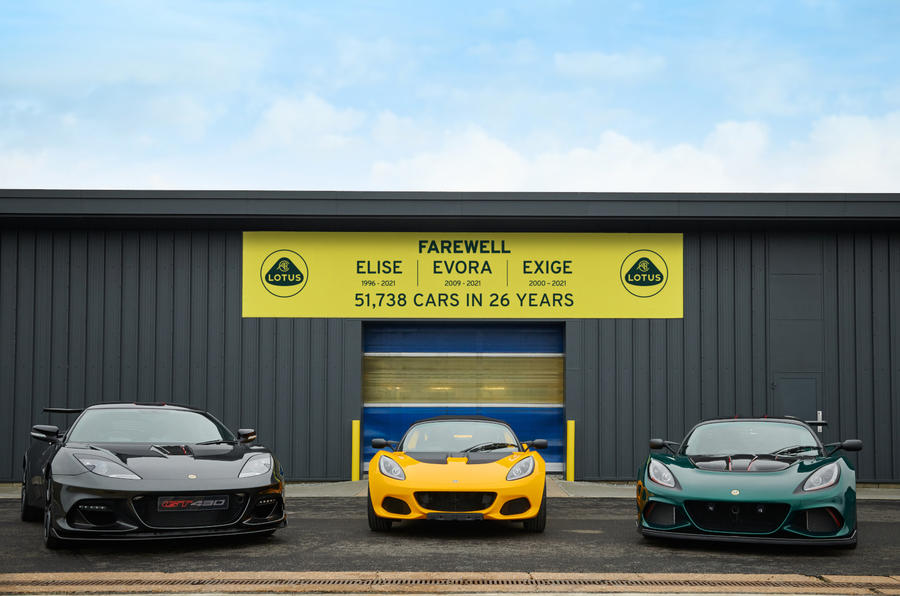Lotus has ended production for all three of its stalwart models, with the final Lotus Elise, Lotus Exige and Lotus Evora models rolling off the production line ahead of the launch of the new Emira-led era.
Combined, Lotus has produced 51,738 units of the three models, which amounts to nearly half of the firm’s total production over its 73-year history.
The final version of each car to be finished will be kept in Lotus’ heritage collection.
The new Emira will go into production in spring 2022. It will be the final pure combustion-engine Lotus, and the first new series production machine since the firm was bought by Geely, and along with the Evija hypercar will mark a new era of future models.
Lotus boss Matt Windle paid tribute to the team who have worked on the three cars, nothing that they would transfer their expertise to producing the Emira and Evija. He added: "I would also like to convey enormous gratitude to all the customers of the Elise, Exige and Evora over the last 26 years for their passion, enthusiasm and support,” said Matt Windle, Lotus managing director.
“These customers have given our ‘three Es’ true cult status – usually reserved for long-out-of-production classics. As we say farewell to the last few cars, we look forward to the Emira and Evija in the all-new factories at Hethel and sub-assembly facilities in Norwich, which introduce greater efficiencies and automation, higher quality and flexibility and the hugely exciting next chapter in our Vision80 strategy.”
The Elise, first produced in 1996, has gained a Sport 240 Final Edition in yellow which is the final model out of 35,124 cars produced.
The last Exige is a Cup 430 Final Edition in heritage racing green and is the 10,497th example to come out of Hethel. The model launched back in 2000.
The two models are based on Lotus’ small car platform that was also used to produce the Vauxhall VX220 and the original Tesla Roadster. Around 7200 VX220s and 2515 Roasters were produced alongside the Lotus 340R, Europa, 2-Eleven and 3-Eleven cars for 56,618 cars produced on the platform.
The larger Evora first hit UK roads in 2009. Its final model is painted in dark metallic grey and represents the 6117th Evora out of the firm’s Norwich factory.
“Together with the Lotus design team, I have lived and breathed these cars for over 26 years,” said Russell Carr, Lotus’ design director.








Join the debate
Add your comment
Interesting that they keep quiet about the closely related, but ultimately unsuccessful, Europa and VX220/GT.
This was a great architecture that resulted in some very fine cars.
I wish Lotus all the best of luck and success.
I'd be interested to know what will happen to the tooling for these models. Wouldn't it make sense for a company like Caterham to aquire it and develop the cars further as it did with the Seven? Or have modern safety and emissions regulations put paid to any sort of continued production?